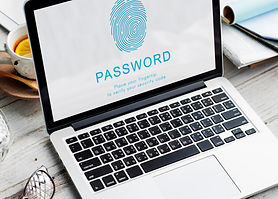Cyber Security Awareness
In this digital age, it is crucial to follow certain guidelines to protect your data from cyber threats. Here are some do’s and don’ts for safe computing:
Do’s:
-
Use Strong Passwords: Always use complex and unique passwords for all your accounts. A strong password should include a combination of uppercase and lowercase letters, numbers, and special characters.
-
Update Regularly: Keep your operating system, browser, antivirus, and other critical software up to date. Software updates often include patches for security vulnerabilities.
-
Secure Your Wi-Fi: Make sure your home Wi-Fi network is secure. Use a strong password and consider using a network encryption protocol, such as WPA2.
-
Backup Your Data: Regularly backup your data. In case of a data loss or a ransomware attack, backups will ensure that your information is not lost.
Don’ts:
-
Don’t Click on Suspicious Links: Be wary of unsolicited emails or messages that contain links or attachments. They could lead to malicious websites or download harmful software onto your device.
-
Don’t Share Sensitive Information: Never share sensitive information such as your passwords, PINs, or Social Security number online or over the phone.
-
Don’t Use Public Wi-Fi for Transactions: Avoid using public Wi-Fi networks for making financial transactions or accessing sensitive information. These networks may not be secure and could expose your data to cybercriminals.
-
Don’t Ignore Security Warnings: If your browser or security software warns you about a website’s security, heed the warning and avoid visiting the site.
Here are some additional safe computing practices:
Do’s:
-
Use a Firewall: Ensure that your computer has a firewall enabled. A firewall acts as a barrier between your computer and the internet, blocking unauthorized access.
-
Install Antivirus Software: Use reliable antivirus software and keep it updated. It can help detect and remove malware from your computer.
-
Use Two-Factor Authentication (2FA): Whenever possible, enable 2FA on your accounts. This adds an extra layer of security by requiring two types of identification before you can access your accounts.
-
Be Aware of Phishing Scams: Be cautious of emails or messages that ask for personal information or direct you to log in to your account. Always verify the source before clicking on any links.
Don’ts:
-
Don’t Download Unknown Software: Only download software from trusted sources. Untrusted software can contain malware.
-
Don’t Leave Your Devices Unattended: Always lock your devices when you’re not using them to prevent unauthorized access.
-
Don’t Use the Same Password for Multiple Accounts: Using the same password for multiple accounts increases the risk. If one account is compromised, all your accounts could be at risk.
-
Don’t Ignore Software Updates: Regularly update your software. Updates often include security patches that fix vulnerabilities.
Social Media
Here are some tips to protect your personal data on social media
Phishing
Recognizing a phishing attempt can sometimes be challenging, but here are some key signs to look out for:
Phishing attempts on mobile devices can be a bit different from those on desktops, but many of the same principles apply.
Here are some signs to look out for:
If you’ve accidentally clicked on a suspicious link, don’t panic. Here are some steps you can take:
Malware
Here are some common signs that your device might be infected with malware:
Online Scams
Here are some common online scams to watch out for:












